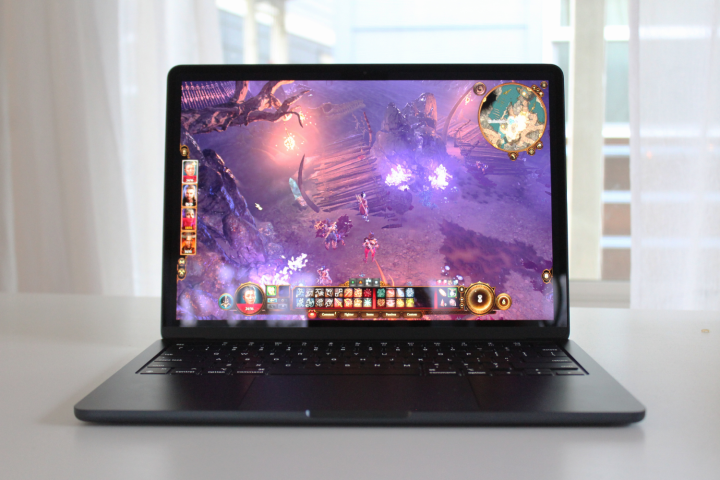
The new MacBook Air with M3 chip not only allows you to use it with two external displays, but it has also reportedly addressed a storage problem that plagued the previous M2 model. The laptop now finally has much faster storage performance since Apple has switched back to using two 128GB NAND modules instead of a single 256GB module on the SSD drive.
This was discovered by the YouTuber Max Tech, who tore down the entry-level model of the MacBook Air M3 with 8GB of RAM and 256GB of storage. In his tests, thanks to the two NAND modules, the M3 MacBook Air is nearly double faster than the M2 MacBook Air. Blackmagic Disk Speed tests show that the older M2 model with the problematic NAND chip had a 1584.3 Mb/s write speed, and the newer M3 model had 2108.9 Mb/s for the M3 model, for a 33% difference. In read speeds, it was 1576.4 Mb/s on the old model and 2880.2 Mb/s on the newer model.
As Max Tech points out, this makes a difference in everyday usage. On these entry-level models, when the 8GB RAM runs out, the MacBook will start using storage as extra RAM. This can help make the M3 MacBook Air more responsive in the long run.
It also helps with file transfers. In Max Tech’s tests, the new M3 MacBook Air transferred a 117GB file over Thunderbolt in 4 minutes and 29 seconds, about two minutes faster than the old MacBook Air M2, which did the same task in about 6 minutes and 29 seconds.
The results clearly show some super fast speed differences and since Apple has made this change, the MacBook Air with an M3 chip could now perhaps be a better machine for light video editing and heavier multitasking.
Of course, we shouldn’t be giving Apple too much credit. After all, the original M1 MacBook Air also came with two NAND modules. The M2 MacBook Air tried to cut corners and received a lot of heat about it at the time.
But now, thanks to the change, you’ll no longer have to shell out the extra money for a 512GB storage option for faster SSD performance, saving you a cool $200.
Previously, if you wanted a MacBook Air with two NAND modules, you’d have to opt for that higher-end configuration. You might not even tempted to make an unnecessary jump to the MacBook Pro, either.
Editors’ Recommendations




